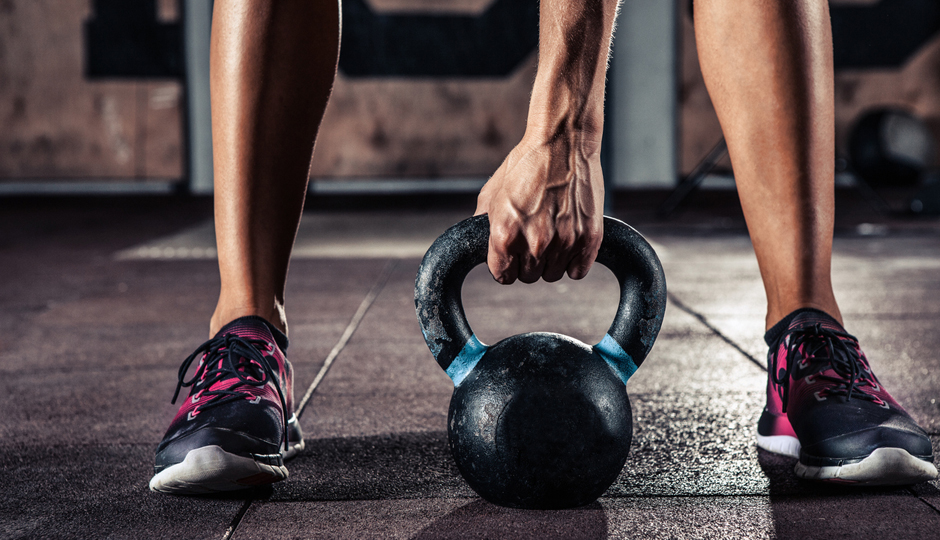The Pre-Workout Step to Make Your Gym Time More Effective
Most of us know we should be foam rolling before our workouts, but one question that always arises is this: “How long do the benefits of foam rolling last?” The answer, to be short and sweet, is not long enough. Once we are done rolling pre-workout in order to loosen our muscles, we have changed the way our bodies move: Trigger points and tightness within the muscles have been released, giving us more range of motion and more flexibility. We feel these benefits of rolling immediately, but the thing is, your brain has not been made aware of these newfound ranges of motion — and until it is made aware, these changes will only last a short while.
But not to fear. There’s one step your can take after you foam roll and before you work out that will help you reap the biggest benefits from these new ranges.
To make the effects of foam rolling more permanent, we need to make our nervous system aware of what our new ranges are. We need to take each joint to the very edges of these new ranges of motion in order to lay down new movement patterns. That’s where Functional Range Conditioning (FRC for short) comes in. FRC takes a joint-by-joint approach to reteach our nervous system how to use this newfound range so that we can get more out of our workouts. Without working in FRC after a pre-workout foam-rolling session, the range can go unused and can quickly be lost.
To truly understand the benefits of FRC, we need to first understand the difference between flexibility and mobility. Let me break it down for you: Flexibility is essentially the ability to get into a position using some kind of external force, like using the seat of a bench to stretch your hamstring. Mobility, on the other hand, is a combination of stability and flexibility. Can you get your leg into that same position on the bench, at the same height, without the use of the bench? When you can perform these movements on your own, you can tap into them whenever they are needed throughout your day in order to prevent injury and to perform better at your sport or during exercise. In every movement we make, when one muscle shortens or flexes, there is an opposing muscle that lengthens or extends. Proper joint usage depends on both a give and take of the muscles involved, not just the hamstring being stretched when on the bench, but the hip flexors and quads on the other side of the leg when not using the bench. With proper joint function comes a decrease risk of muscle imbalances and joint degeneration, resulting in less pain.
Whether you’re trying to make the effects of foam rolling, some table time with massage therapist or a chiropractic session stick, doing controlled articular rotations (CARs) is a great way to start learning FRC and teaching your body the new ranges that have been created within each joint. CARs can be done with every joint in the body, but I have included videos of how to perform CARs for shoulders and hips to start.
So, when exactly should you squeeze these in? Well, CARs should be done right after your pre-workout foam rolling. Once you have released restrictions in the muscle, you will have the ability go move the joints farther than you would without rolling, and CARs will help that increased range of motion stick throughout your workout. When trying to decide which areas to focus on with your CARs, think about what you will be doing in your workout that day. Doing deadlifts? Focus on hips and thoracic spine CARs. Going out for a run? Focus on your lower body, especially the ankles and knees. If you’re going for a swim, include shoulder CARs. And if you remember anything about doing CARs, remember this: When doing your CARs it is important to tighten all other muscles in the body except the ones used to move the particular joint you are mobilizing.
Trust me: The extra five minutes you dedicate to joint health will go a long way in your workouts.
……………….
Pat Kempsey is the owner of Pat Kempsey Golf Fitness and Personal Training in Center City. He is a Certified Personal Trainer through the National Academy of Sports Medicine and the only Level 3 Titleist Performance Institute Fitness Professional in Philadelphia. You can contact him at pat@patkempsey.com
Like what you’re reading? Stay in touch with Be Well Philly—here’s how:
- Like Be Well Philly on Facebook
- Follow Be Well Philly on Twitter
- Follow Be Well Philly on Instagram
- Follow Be Well Philly on Pinterest
- Get the Be Well Philly Newsletter



